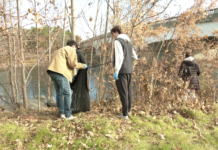
This spring, the Tulane University National Pan-Hellenic Council launched a project to create a campus space in honor of Tulane’s historically African-American Greek letter organizations.
According to members of the Plots Planning Committee, the NPHC plots will be situated near the Carolyn Barber-Pierce Center for Intercultural Life, serving as “a public space for students, alumni, and community members to gather, reflect, and celebrate the rich history and continued work of organizations, students and alumni within the National Pan-Hellenic Council.”
Jordan Brignac, member of the Alpha Kappa Alpha sorority, compared the plots to the sorority and fraternity houses and said the plot will provide “a place where we can show off a little piece of our history, and how we’re all interconnected.”
Nine fraternities and sororities, often referred to as the “Divine Nine,” comprise the NPHC. Their mission includes promoting “higher standards of scholarship, a greater degree of culture, closer social fellowship and a stronger interpreter spirit among the affiliate members.”
Initially established at Howard University in 1930, the NPHC plots were erected to “symbolically and physically represent the Divine Nine organizations.”
Laura Osteen, assistant vice president of campus life, said the project will be completed this spring as long as the surrounding projects do not interfere with its construction.
The NPHC aims to offer a sense of community for Tulane’s Black students, and additional information can be found on the Office of Fraternity and Sorority Programs’ website.
“I feel like it’s a great step in the right direction,” Brignac said. “[The plots] signify a main role in our stance on campus, and it helps us unify our school as well. So this is showing the Black students that come to Tulane that there’s a place for you here and there’s literally a physical place for you here now. And you can see that through the plots.”




















